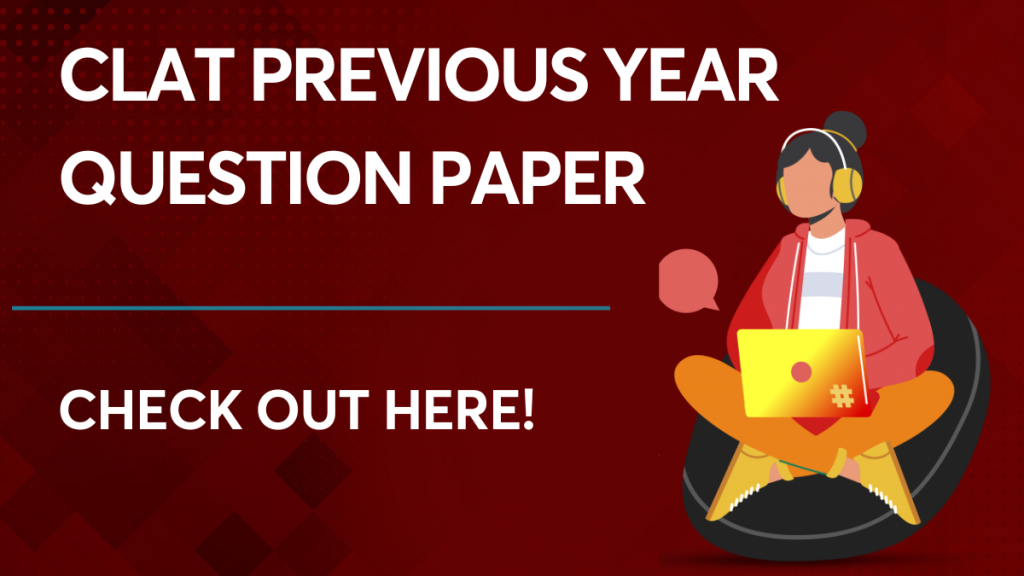The Common Law Admission Test is a nationwide assessment administered by 22 National Law Universities in India to select suitable candidates for their undergraduate and postgraduate law programs. A Consortium of National Law Universities with representatives from each university manages it. Other universities and organisations also use this exam as a criterion for admissions and recruitment. Potential Candidates can boost their performance by practising the CLAT previous year question paper.
Potential applicants are advised to check the CLAT previous year question paper pdf download and the previous year CLAT question paper with answers in this article. Check further to make learning easier.
CLAT Previous Year Question Paper: Download PDF for Free!
For a nationwide exam like CLAT, all preparation steps should be checked to perform well. The most important step is practising the CLAT previous year question paper. To save time, we are furnishing you with the CLAT UG previous year question papers and the CLAT PG previous year question paper here.
CLAT Previous Year Question Paper: How to Download?
The CLAT previous year papers pdf is provided in the above section. Candidates can make use of the links shared. However, a few may not be familiar with the download procedure. To help you with it, we are sharing the steps to CLAT previous year question papers with answers pdf download.
Step 1: Jump to the CLAT previous year question paper pdf download section provided in this article.
Step 2: Click on the Download paper button given across the particular year column.
Step 3: Now, you will be redirected to provide the phone number.
Step 4: Provide your phone number and the basic details requested.
Step 5: A new page will be opened, and now, click on the download pdf button present at the top-right of the screen.
Step6: Once clicked, the pdf will be downloaded for your learning.
Check the latest updates below-
CLAT Previous Year Question Paper: What are the Benefits?
All successful examinees have one thing in common; they all practised with the CLAT exam previous year question paper. Solving the paper from the previous year to assess your abilities is essential. Without it, it would be nearly impossible to acquire great scores on your exam. A few of the advantages are mentioned here:
- Solving previous year’s papers beforehand provides an overall understanding of the topics from which questions are typically asked.
- Once the syllabus is finished, solving the previous year’s paper is recommended to assess your skills. It will enable you to recognize your weaker points and work to improve them.
- The in-depth understanding of exam patterns and your time allocation for each section can be assessed by practising CLAT previous year’s papers.
- The CLAT previous year papers pdf can increase your speed and accuracy in attempting the questions.
- By practising the CLAT previous year exam paper, you can compare the level of your preparation and the level of questions. With this, you can boost your preparation accordingly.
CLAT 2023 Exam Sections
CLAT Exam 2023 consists of five sections, and the maximum time is 120 minutes. Candidates can go through the exam pattern below for detailed information.
| CLAT Exam Sections | MCQs per section | Maximum Marks |
|---|---|---|
| English Language | 28-32 | 28-32 |
| Current Affairs, including General Knowledge | 35-39 | 35-39 |
| Logical Reasoning | 28-32 | 28-32 |
| Legal Reasoning | 35-39 | 35-39 |
| Quantitative Techniques | 13-17 | 13-17 |
| Total | 150 | 150 |
CLAT Previous Year Question Paper: FAQs
You can get the CLAT previous year question papers in this article from the year 2013.
The CLAT previous year’s question papers can be downloaded by clicking the download button and providing the details. Please take a look at the detailed steps provided in the above sections.
There are a total of 150 questions in the CLAT 2023 examination.
The CLAT previous year papers are helpful for the candidates to understand the type of questions, examination pattern, and sectional weighing.
CLAT 2023 examination covers five sections, and the maximum time is 120 minutes.
